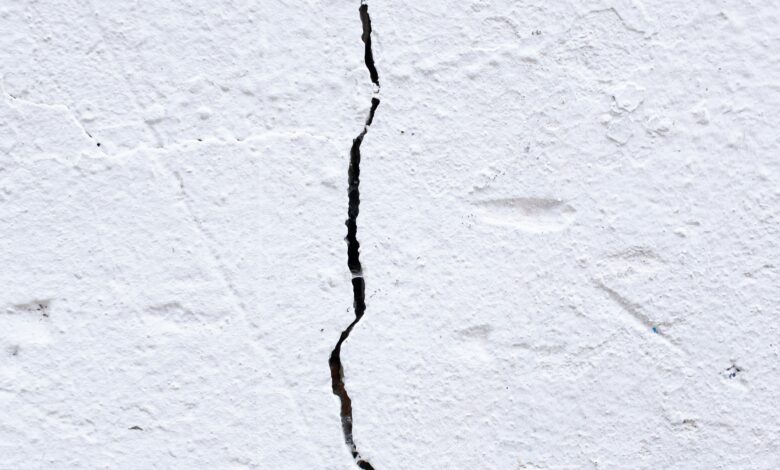How to Insure Your Home Against Earthquakes

Earthquakes are unpredictable natural disasters that can cause catastrophic damage to homes and properties. While they may not occur frequently in every region, areas prone to seismic activity—such as California, Alaska, and parts of the Pacific Northwest—require homeowners to take proactive measures to protect their investments. Standard homeowners insurance policies typically exclude earthquake damage, making specialized coverage essential for safeguarding your property. This guide will walk you through everything you need to know about insuring your home against earthquakes, from understanding the risks to selecting the right policy.
Why Standard Homeowners Insurance Doesn’t Cover Earthquakes
Before diving into earthquake insurance, it’s important to understand why it isn’t included in standard homeowners policies. Most traditional policies cover perils like fire, theft, windstorms, and water damage (excluding floods), but they explicitly exclude “earth movement.” This includes:
- Earthquakes
- Landslides
- Volcanic eruptions
- Sinkholes
The rationale behind this exclusion is simple: earthquakes pose a unique and significant risk that requires separate underwriting and pricing models. As a result, homeowners must purchase additional earthquake insurance to ensure comprehensive protection.
Assessing Your Risk of Earthquake Damage
Not all regions face the same level of earthquake risk. To determine whether earthquake insurance is necessary for your home, consider the following factors:
1. Geographic Location
- If you live in an area with high seismic activity—such as along fault lines—you’re at greater risk. The U.S. Geological Survey (USGS) provides detailed maps showing earthquake hazards across the country.
- Even if you don’t reside in a high-risk zone, smaller tremors can still cause damage, particularly to older or poorly constructed homes.
2. Home Construction
- Homes built on unstable soil or hillsides are more vulnerable to earthquake damage.
- Older homes may lack modern building codes designed to withstand seismic forces, increasing repair costs after a quake.
3. Financial Preparedness
- Can you afford to rebuild or repair your home out-of-pocket if it’s severely damaged? If not, earthquake insurance could provide critical financial relief.
What Does Earthquake Insurance Cover?
Earthquake insurance is designed to cover losses directly caused by ground shaking. Here’s what a typical policy might include:
1. Structural Damage
- Repairs or rebuilding costs for your home’s foundation, walls, roof, and other structural components.
2. Personal Property
- Replacement or repair of damaged belongings, such as furniture, appliances, electronics, and clothing.
3. Additional Living Expenses (ALE)
- Coverage for temporary housing, meals, and other necessities if your home becomes uninhabitable due to earthquake damage.
Exclusions to Keep in Mind:
- Floods or Tsunamis Triggered by Earthquakes: These require separate flood insurance, which is available through the National Flood Insurance Program (NFIP) or private insurers.
- Landscaping or External Structures: Damage to swimming pools, fences, driveways, and landscaping is usually excluded.
- Cars and Vehicles: Auto damage should be covered under your auto insurance policy, specifically comprehensive coverage.
How Much Does Earthquake Insurance Cost?
The cost of earthquake insurance varies widely based on several factors:
1. Location
- Premiums are higher in high-risk areas. For example, residents of California often pay significantly more than those in less seismically active states.
2. Home Value
- More expensive homes generally have higher premiums because reconstruction costs are greater.
3. Deductibles
- Earthquake policies typically come with high deductibles, ranging from 5% to 25% of your home’s insured value. For instance, if your home is insured for $500,000 and you have a 10% deductible, you’d be responsible for the first $50,000 of repairs.
4. Construction Type
- Homes made of wood-frame construction tend to fare better during earthquakes compared to brick or masonry structures, potentially lowering premiums.
On average, annual premiums range from $100 to over $1,000, depending on these variables. While the upfront cost may seem steep, it pales in comparison to the potential financial devastation of an uninsured loss.
Steps to Purchase Earthquake Insurance
Securing earthquake insurance involves careful research and planning. Follow these steps to find the best coverage for your needs:
1. Evaluate Your Current Policy
- Review your existing homeowners insurance to confirm that it excludes earthquake damage. Contact your insurer to discuss adding earthquake coverage or obtaining a standalone policy.
2. Shop Around
- Compare quotes from multiple providers. In some states, earthquake insurance is offered by private companies, while in others, it’s available through state-sponsored programs like the California Earthquake Authority (CEA).
3. Understand Policy Terms
- Pay close attention to coverage limits, exclusions, and deductibles. Ensure the policy aligns with your home’s replacement cost and your ability to pay the deductible.
4. Bundle Policies
- Some insurers offer discounts if you bundle earthquake insurance with your homeowners policy. Ask about potential savings.
5. Consider Retrofits
- Strengthening your home’s foundation and structure can reduce the likelihood of severe damage during an earthquake. Many insurers offer premium discounts for homes with seismic retrofits.
Alternatives to Traditional Earthquake Insurance
If traditional earthquake insurance feels unaffordable, explore alternative options:
1. Parametric Insurance
- Also known as “index-based” insurance, this type pays a predetermined amount if an earthquake meets specific criteria (e.g., magnitude or intensity). It’s simpler and faster to claim but offers less flexibility than traditional policies.
2. Earthquake Savings Accounts
- Some states, like Utah, offer tax-advantaged savings accounts specifically for earthquake-related expenses. Contributions grow tax-free and can be withdrawn penalty-free for qualifying repairs.
3. Community Assistance Programs
- Nonprofits and government agencies sometimes provide aid to disaster victims, though relying solely on these resources can be risky.
Tips for Reducing Earthquake Risks
While insurance provides financial protection, taking preventive measures can minimize damage and save lives:
- Secure Heavy Items
- Anchor bookshelves, appliances, and water heaters to walls to prevent tipping.
- Reinforce Your Foundation
- Install bolting systems to secure your home to its foundation.
- Create an Emergency Kit
- Stock up on essentials like food, water, flashlights, batteries, and first-aid supplies.
- Develop a Family Plan
- Practice evacuation routes and designate meeting points in case of separation.
- Stay Informed
- Use apps and alerts from organizations like the USGS to stay updated on seismic activity.




